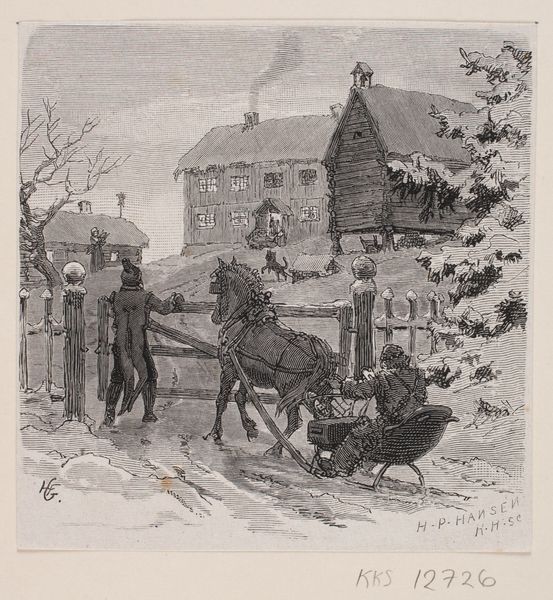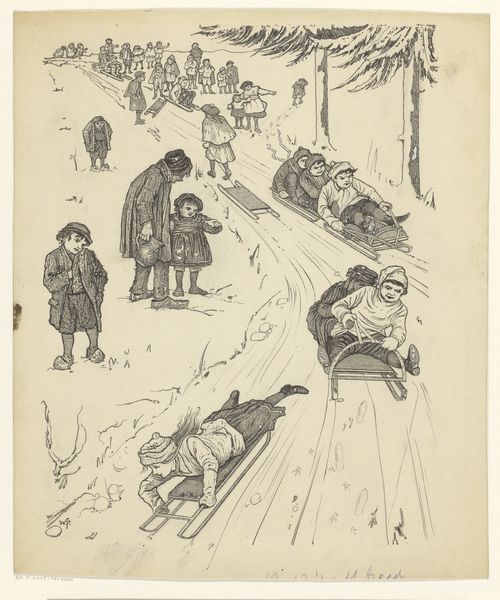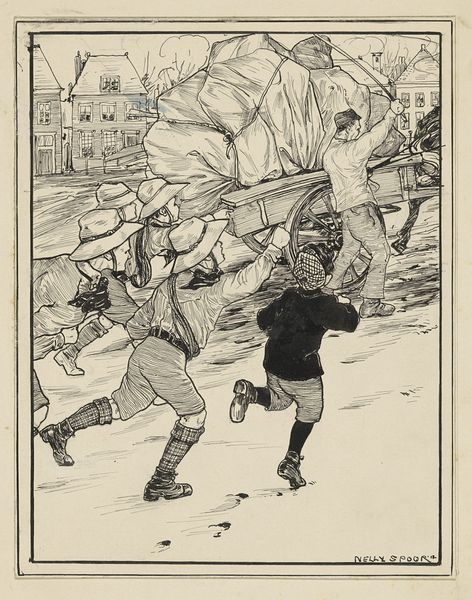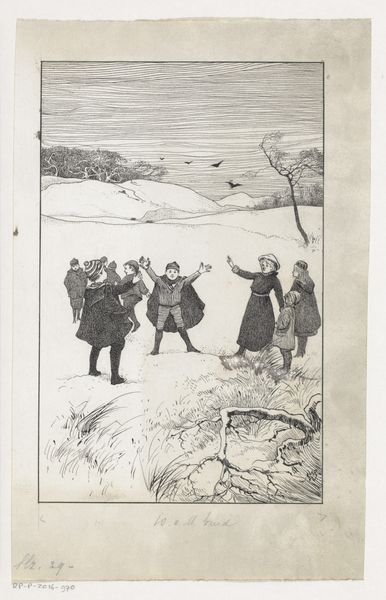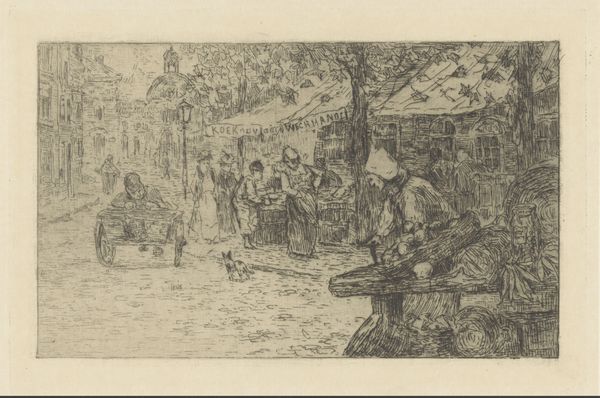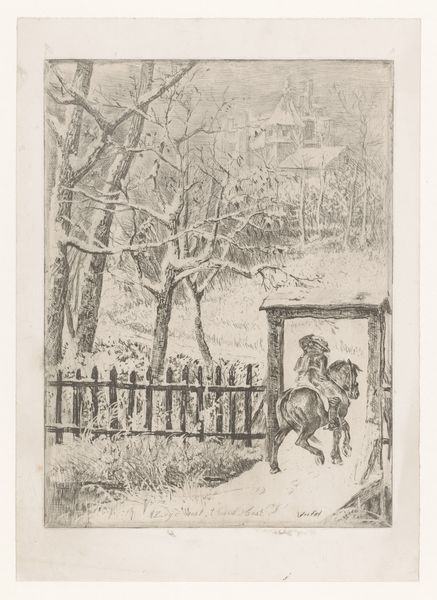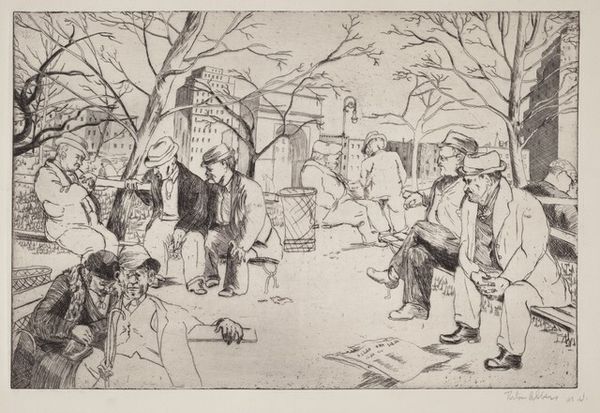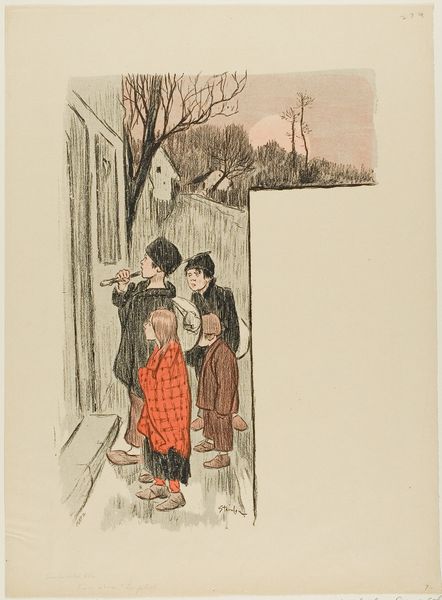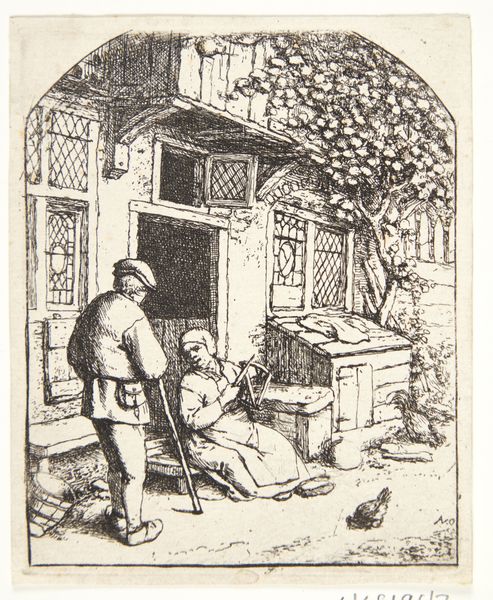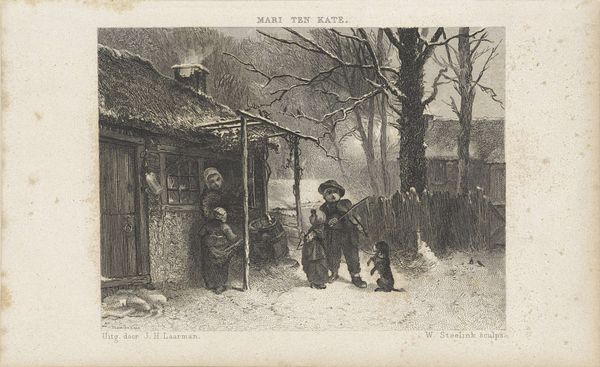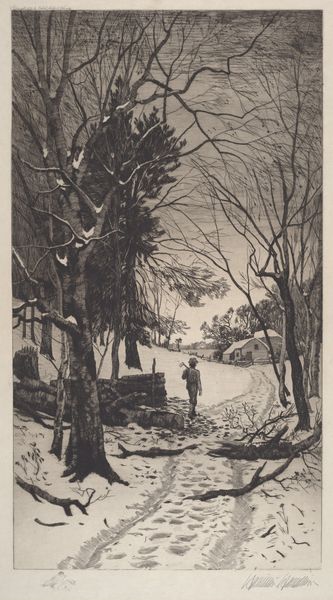
drawing, paper, ink
#
drawing
#
landscape
#
paper
#
ink
#
genre-painting
Dimensions: height 334 mm, width 228 mm
Copyright: Rijks Museum: Open Domain
Curator: Gust van de Wall Perné created this drawing, "Drie jongens in de sneeuw," sometime between 1887 and 1911. It’s currently held here at the Rijksmuseum. Editor: It looks like a woodblock print, maybe? Stark, almost oppressive. The wintry scene with those spindly, bare trees creates a sense of isolation. I can practically feel the cold radiating from the paper. Curator: The artist actually employed ink on paper. This work aligns with the themes prevalent in genre painting, exploring the everyday experiences of these young boys. We should consider this work through the lens of children's labor, observing the means in which working class youngsters contribute. How does that sit with you? Editor: It’s interesting to consider these activities as labor, especially if the boys were obligated to clear paths. The visual evidence indicates children and winter, but how did Van de Wall Perné intend for these three boys to be viewed? Were their experiences elevated, simply acknowledged, or are we left to assume that such tasks comprised routine. The composition centers the actions. One is wielding a snow shovel while the other two focus on a sled. How does the materiality amplify this view of winter and obligation? Curator: That is an interesting entry-point! We could discuss the weight of obligation imposed upon children within the context of broader socio-economic pressures of the era. Considering the availability and affordability of drawing materials to working class families, do we know if they are intended to be viewed as representatives of a specific class. Editor: It would require researching the labor market around the period of artwork to understand how the artist utilized affordable materials and accessible forms to potentially provide some socio-economic and historical awareness to the work itself. Curator: Looking at the distribution and context in which these drawings would have been accessible could reveal much about how issues of identity and labour were conceptualized in relation to art and social action at the time. Editor: Yes, delving into the methods and meanings helps expose these dimensions to enrich our understanding. I'm interested to explore these relationships to potentially amplify their social narrative, too.
Comments
No comments
Be the first to comment and join the conversation on the ultimate creative platform.
